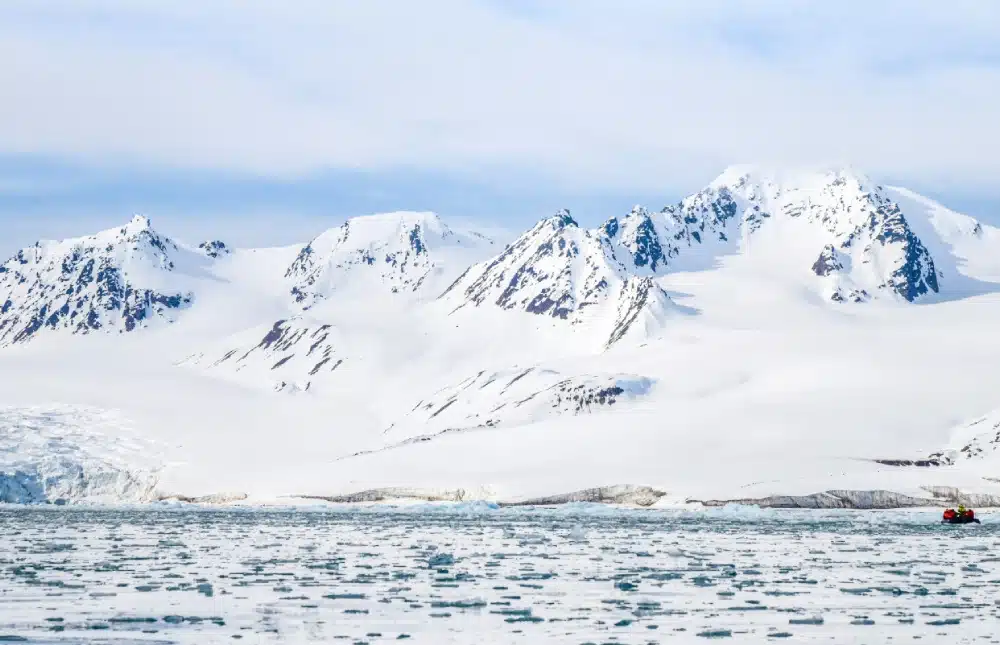Explore Svalbard’s largest island
It was on Spitsbergen, the closest inhabited island to the North Pole, that Laura Jourdan, a biologist by training, took her first steps as a polar expedition guide. She immediately fell in love with the landscapes, wildlife and culture of the Arctic, which she shares with Escales.
Spitsbergen, the only inhabited island in Svalbard
Spitsbergen is part of the Norwegian archipelago of Svalbard. The island is surrounded by the Norwegian and Barents Seas to the south, the Greenland Sea to the west and the Arctic Ocean to the north. A population of around 2,400 includes scientists and Arctic enthusiasts, as well as students and miners. Longyearbyen is the larger of the two inhabited settlements on Spitsbergen.

It was her curiosity about wildlife in extreme environments that drew Laura Jourdan to Spitsbergen for the first time. She stayed there for over three years. This thirst for discovery also motivates more than 700 students every year. Svalbard is a model for scientific cooperation on the polar environments. In Longyearbyen, the most northerly university on the planet, UNIS (University Centre in Svabard) is home to future Arctic experts and scientists from all over the world, who work year-round at the Ny-Ålesund research centre.
A life of solidarity in the polar environment
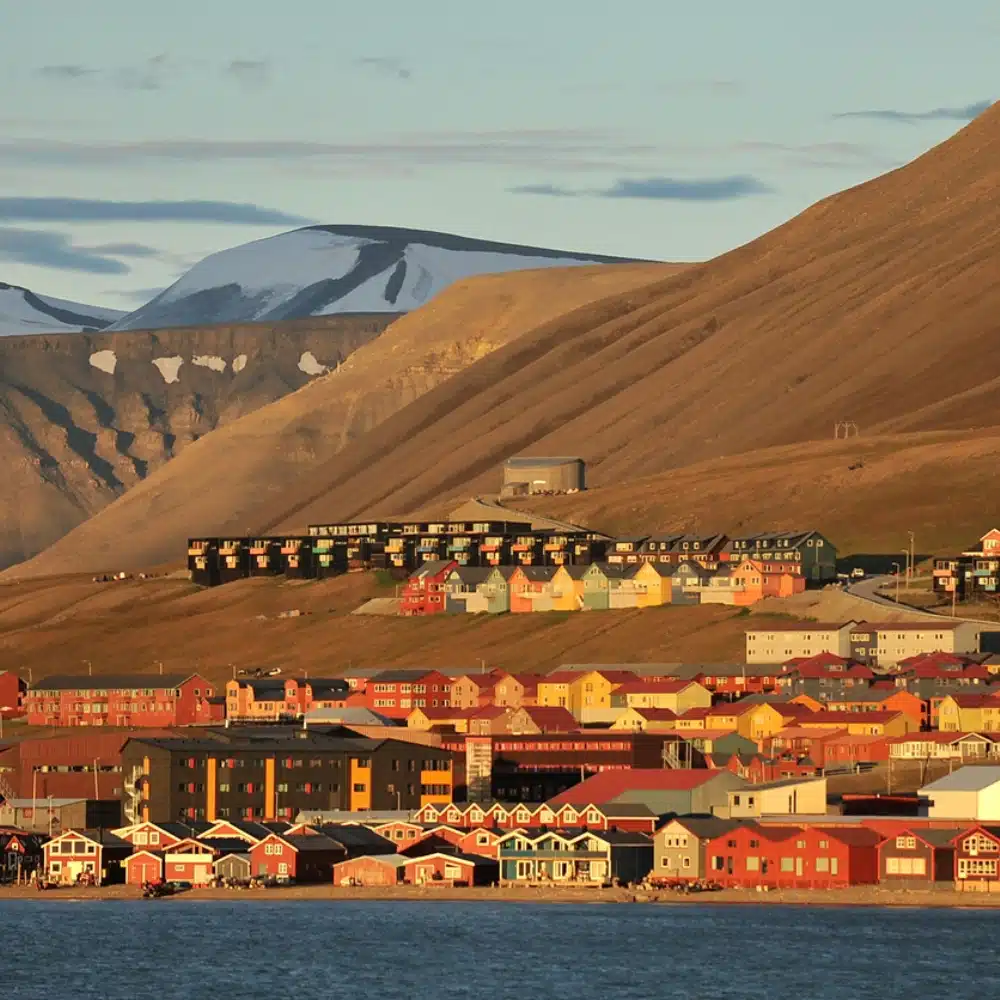
The polar night lasts four months of the year at Spitsbergen. What unites the residents? The same passion for the Arctic and the desire to preserve a unique environment. Here, hospitality and the warmth of the people make up for the freezing temperatures, as Laura explains: “The locals call it the “dugnad “. This word refers to solidarity between residents. Everyone contributes to the common good by contributing their know-how. Whether it’s building a tree house in the forest or tidying up the local library, here helping each other is second-nature and a real comfort.“
Longyearbyen, the most northerly settlement in the world
Located at a latitude of 78 degrees north, Longyearbyen grew after American John Longyear discovered coal deposits in 1901. Before that, the region was deserted. It was only attractive to trappers and whalers hunting polar bears, seals and whales. Since 1925, the Spitsbergen Treaty, signed in 1920, has granted Norway administration of Svalbard.

The young, cosmopolitan population of Longyearbyen is contributing to the town’s development. Restaurants, pubs, cinemas, swimming pools… and even regular jazz and blues festivals produce a concentrated hub of life at the far north of the planet, on an island where it’s forbidden to die! However, with polar bears on the city’s doorstep, the danger is very real. “Thankfully, no one locks their doors here,” Laura tells us.
Museums to visit in Longyearbyen
- Svalbard Museum: 400 years of history to discover, including a collection of old maps showing the North Pole as the planet’s central landmark.
- North Pole Expedition Museum: the chance to walk in the footsteps of the greatest Arctic explorers, including Roald Amundsen, Jean-Baptiste Charcot and Ernest Shackleton.
Spitsbergen, a land of everyday adventures
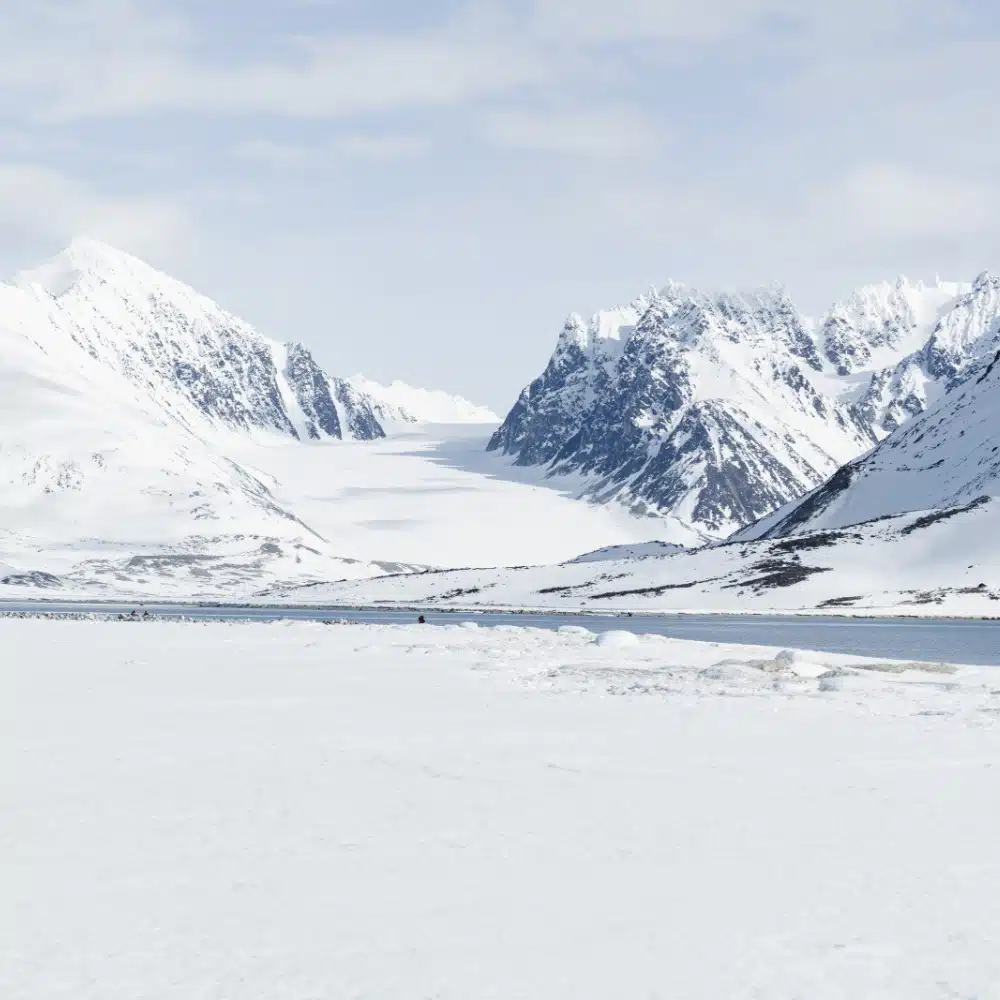
The island of Spitsbergen attracts enthusiasts of the wild territories of the Far North. When ice imprisons the waters, the only link from Norway is by plane. Locally, snowmobiles remain the preferred means of locomotion in winter. And as Laura Jourdan points out “a sudden change in the weather or an encounter with a polar bear is always possible. There’s no question of venturing out without a rifle or GPS! »
At Svalbard, experiencing the polar night is part of the adventure. Every year on 8 March, all eyes turn feverishly towards the mountain Sarkofagen to celebrate Solfestuka. “What could be more intoxicating than the return of the sun after four months of darkness?” , confides Laura.

Spitsbergen’s mining past
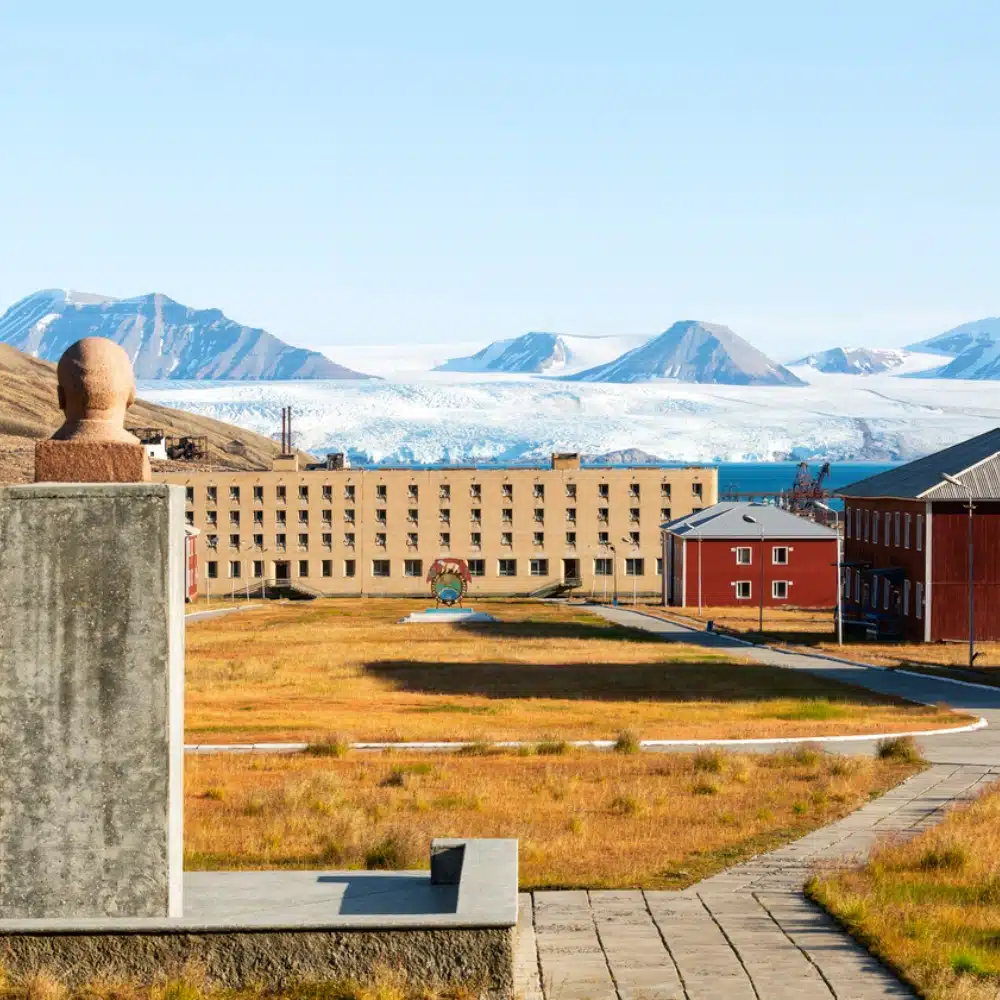
But visiting Svalbard also means immersing yourself in the history of the archipelago. Five kilometres from Longyearbyen, the disused mine Gruve 3 offers a journey into the daily lives of miners at the beginning of the twentieth century. Although the Gruve 7 mine, around twenty minutes’ drive from the town, still supplies Longyearbyen’s electricity, it is due to close in 2025.
In the disused Russian mining towns of Barentsburg and Pyramiden, time seems to have stood still. A giant bust of Lenin, an Orthodox chapel and an auditorium bear witness to the former glory of the Soviet Union.

An Arctic setting of sea, land and ice
Magic of the fjords. Intense blue of icebergs. Depth of ice caves. Spitsbergen delights lovers of fairytale natural sites, the playground of emblematic Arctic wildlife.

A fragile and protected polar ecosystem
“Be taken on a ride pulled by dog sled across stretches of snow as far as the eye can see, go on a snowmobile excursion or canoë-kayak on the fjords or be tempted to glide along on touring skis…. In winter, Spitsbergen offers many opportunities to discover the landscapes and wildlife, explains the young guide.
In summer, the snow gives way to tundra. Pink saxifrages and polar poppies give the landscape a dreamlike quality. The Nordvest-Spitsbergen national park is working to preserve the island’s biodiversity. More than anywhere else, the fragile balance of fjords and glaciers at the gateway to the North Pole is threatened by global warming.

Spitsbergen is the kingdom of unspoilt wildlife. The short-legged and thick-furred Svalbard reindeer is part of this fairytale landscape. While the Arctic fox watches near the cliffs for the tragic fall of a guillemot egg or the failed attempt of a small chick to take to the air. Along the shore line, seals, walruses and belugas coexist alongside orcas and humpback whales.
Spitsbergen, the land of polar bears
On the island, there are more polar bears than human beings. According to the Norwegian Polar Institute, there are around 3,500 ursus maritimus on Svalbard. As soon as you enter Longyearbyen, a sign warns you of their presence, but it’s from the deck of a boat that you can watch them safely, as they move along the coast or drift on a piece of pack ice. The presence of seals makes this their favourite hunting ground.
Explore Spitsbergen’s fjords and glaciers
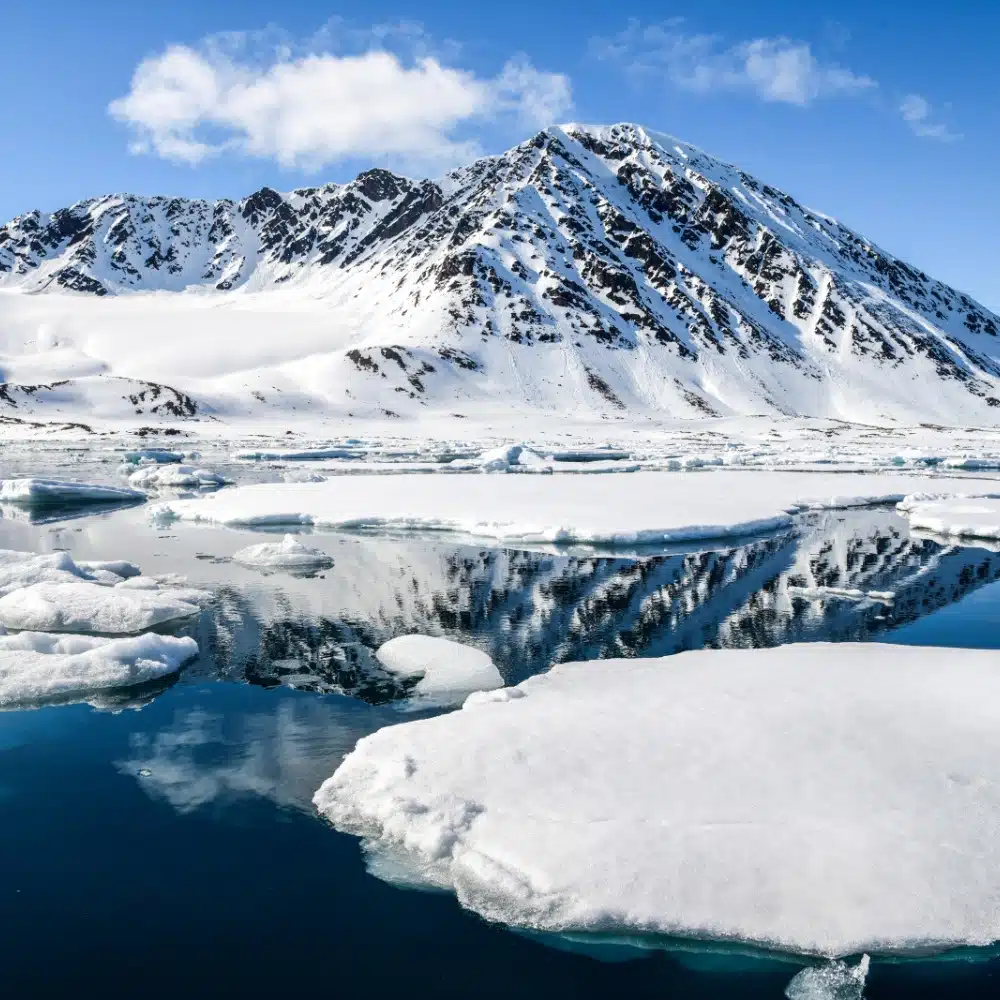
Among the must-see fjords of Spitsbergen, apart from the Magdalenefjorden and Isfjorden, the west coast hides a real gem in the form of the Nordenskiöld glacier. “From deep sapphire blue to transparent aquamarine-like blue, I’ve never seen anything so beautiful, confides Laura.
She also recommends a visit to the Monacobreen, another famous glacier that ends its journey in the waters of Liefdeford with “its imposing, craggy relief looming over the horizon in a deep bay.”
The iceberg calving is a moment as surprising as it is unforgettable, as the polar adventurer testifies: “with a deafening thunderous noise, the glacier cracks and causes a huge block of ice to fall to the bottom of the fjord. The plunge is spectacular.
The Northern Lights as a celestial backdrop
Svalbard is one of the most beautiful places in the world to marvel at the Northern Lights, as light pollution disappears as soon as you move away from Longyearbyen. The Northern Lights have definitely contaminated Laura Jourdan with pole virus.
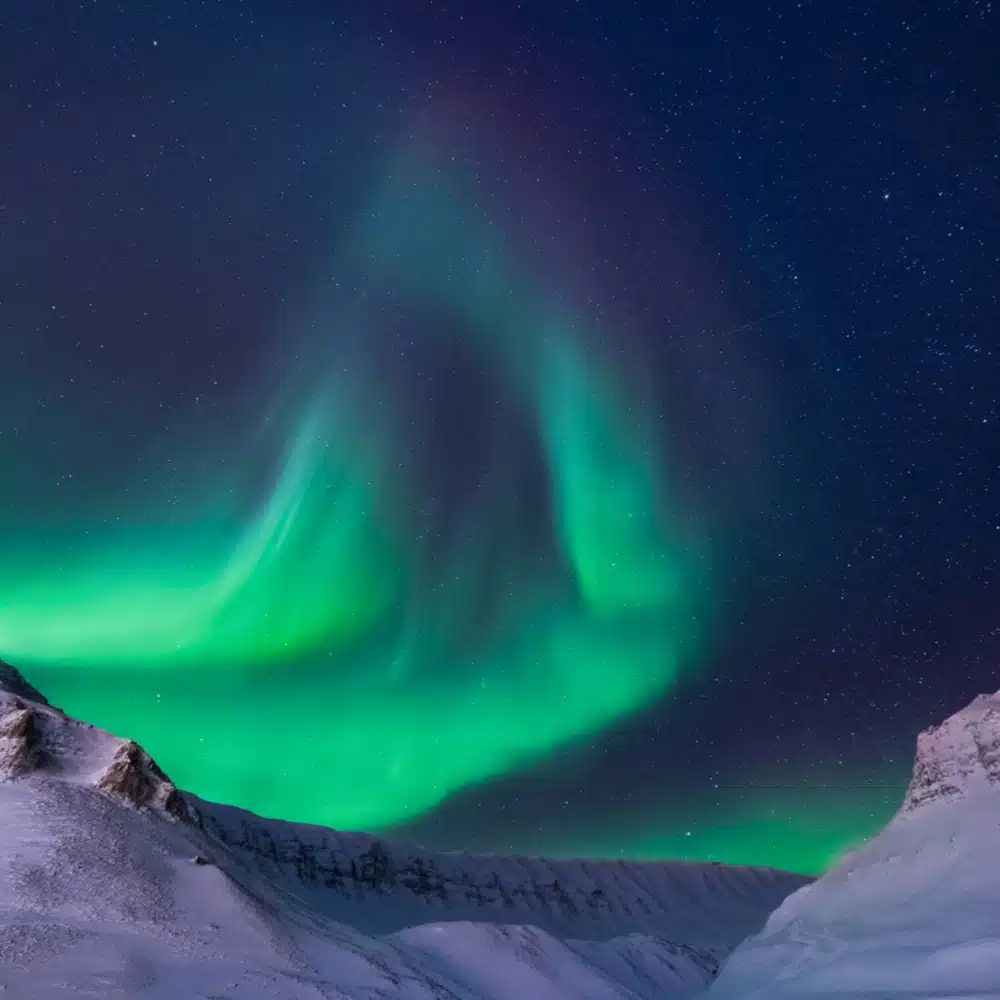

Spitsbergen: the world’s seed reserve
Spitsbergen is home to the world’s seed reserve. In this demilitarised international territory, there is no risk of earthquakes and the permafrost maintains a constant low temperature, ideal for preserving seeds. “It’s impossible to ignore the inestimable value of what’s inside this reservoir. This heritage is essential to the future of humanity on an increasingly fragile planet”, Laura reminds us.
Read more about Laura Jourdan
Laura Jourdan’s adventures can be found in her book Aventurière des Pôles (published in October 2023 by Istya & Compagnie). A journey of initiation, driven by curiosity about wild life in extreme environments. Her message? Daring to follow your dreams.
Photos credits: ©iStock; ©StudioPONANT/Noemie Watel/Morgane Lanco/Juliette Leclerq/Sylvain Adenot/Olivier Blaud.
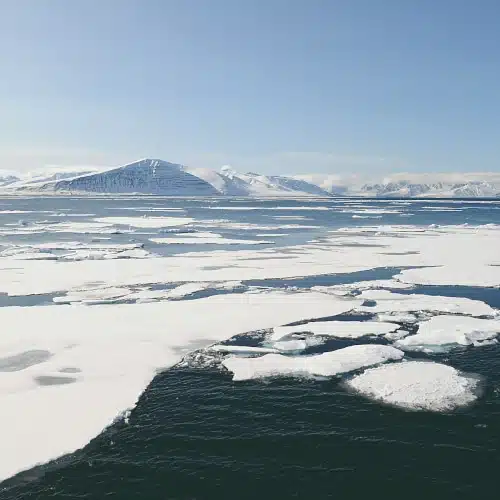
PONANT takes you there
Route to the Far North.

